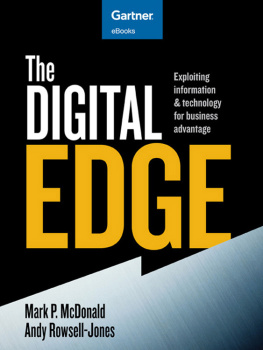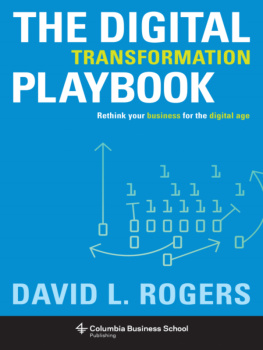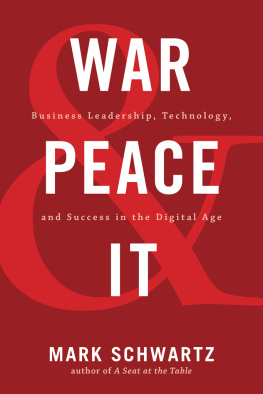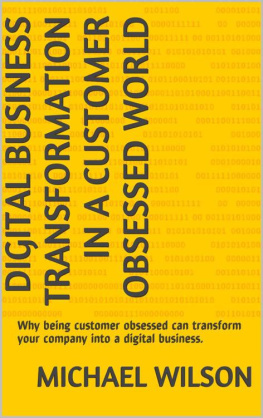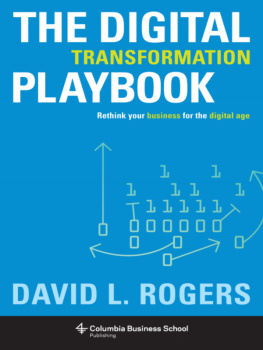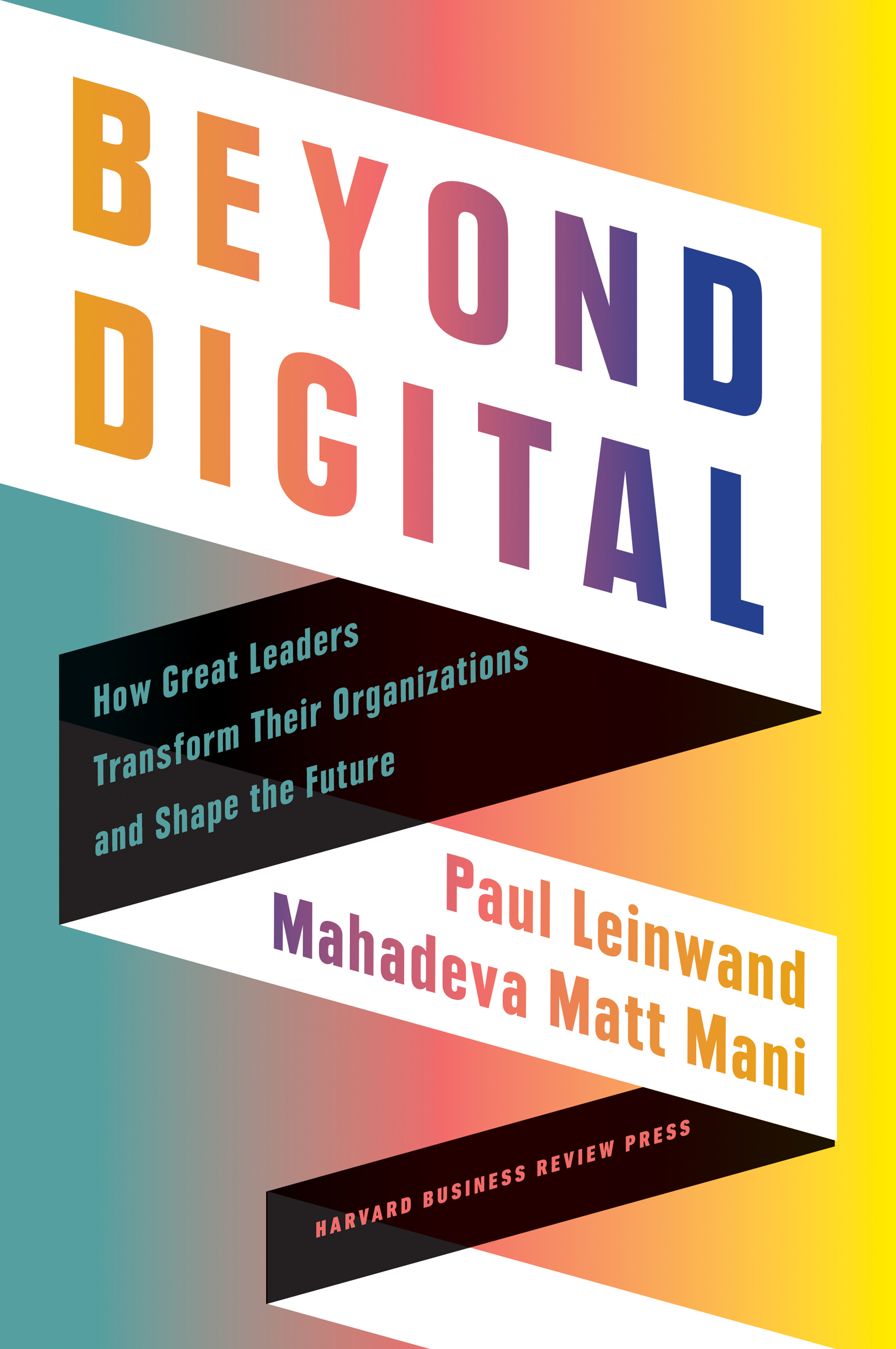Contents
Guide
Pagebreaks of the print version
BEYOND DIGITAL
How Great Leaders Transform Their Organizations and Shape the Future
Paul Leinwand
Mahadeva Matt Mani
HARVARD BUSINESS REVIEW PRESS
Boston, Massachusetts
HBR Press Quantity Sales Discounts
Harvard Business Review Press titles are available at significant quantity discounts when purchased in bulk for client gifts, sales promotions, and premiums. Special editions, including books with corporate logos, customized covers, and letters from the company or CEO printed in the front matter, as well as excerpts of existing books, can also be created in large quantities for special needs.
For details and discount information for both print and
ebook formats, contact ,
tel. 800-988-0886, or www.hbr.org/bulksales.
Copyright 2022 PwC
All rights reserved
No part of this publication may be reproduced, stored in or introduced into a retrieval system, or transmitted, in any form, or by any means (electronic, mechanical, photocopying, recording, or otherwise), without the prior permission of the publisher. Requests for permission should be directed to , or mailed to Permissions, Harvard Business School Publishing, 60 Harvard Way, Boston, Massachusetts 02163.
The web addresses referenced in this book were live and correct at the time of the books publication but may be subject to change.
Cataloging-in-Publication data is forthcoming.
ISBN: 978-1-64782-232-3
eISBN: 978-1-64782-233-0
To all those who inspired us to keep learning
Contents
Shape Your Future
The future cannot be predicted, but futures can be invented.
Dennis Gabor, Nobel prizewinning physicist
The digital age began almost 75 years ago, with the invention of the transistor. The internet is more than 50 years old. The IBM PC was introduced 40 years ago. Even companies that we think of as digital pioneers are aging: Apple is 45 years old, and Google is coming up on 25. Since the first commercial internet browser was created (going on 30 years ago), being digital has become a business mantra. But that is no longer enough. We must now focus on building new forms of advantage rather than just digitizing what we have done in the past.
Yes, the underpinnings of business today are digital, but digitization has become a long road to equivalency, and an expensive one at that. Creating sustainable advantage requires more than digitization. It requires understanding that the nature of competitive advantage has shiftedand that being digital is not enough.
Its time to move beyond digital.
Retail shows why. As in most industries, companies took retail digital starting in the second half of the 1990s. Going digital created great efficiencies in managing inventory, sped up the processing of transactions, and allowed for analytics that supported buying and distribution. These changes meant lowered prices and generally improved customer experiencebut they didnt fundamentally change the process of retail. Companies still focused largely on having (and growing) their retail footprint, buying inventory they believed their customers wanted, often over-bought non-staples, and discounted what didnt sell. They just reduced the quantities involved and made their mistakes faster.
Now look at Best Buy (a big-box electronics retailer based in the United States), which didnt just digitize its operations in the face of fierce price competition from online retailers. It set out to do something much boldergoing beyond selling electronics to help consumers address the significant challenges they had with everything that followed the moment of purchase. It built the Geek Squad to provide customers both in-home and in-store technical support and service, and leveraged many digital advances to accomplish that task. As a result, Best Buy builds deeper relationships with customers, offers technical help, learns about customer habits and wants, and helps customers realize the full value of their investments in electronics and technology. Best Buy didnt just digitize what it had been previously doing but reimagined its role in the world and how digital could help it fulfill that role. As a result, it has thrived even as so many big-box retailers have been shuttering stores.
In the world beyond digital, companies canand mustdo things differently. They enableand requirecompanies to rethink the unique value they can offer customers. Digital technology doesnt just allow for doing things better but for doing better thingseven generating whole new business models as companies reimagine their futures.
This is why, if you expected this book to be about how to go digital, you will be disappointed; this is not that book. This book is about how all companies must rethink their place in a fundamentally changed world and how they must transform to build advantage that is sustainable.
The path taken by Best Buy, and by all the companies researched and profiled in this book, is in stark contrast to what many companies seem to be doing. Instead of incrementing their way toward an uncertain future, these leading companies set out to shape their future by serving a more ambitious and relevant purpose and fundamentally rethinking the system of capabilities that allows them to deliver on that purpose.
What has shifted? With product lifetimes shortening, organizations are recognizing that they cant sustain a differentiated position by focusing narrowly on products and services. Just because you have the best offerings today doesnt mean youll have the best tomorrow. Smart companies now focus on building differentiation in what they do and how they operate, not just what they sell. If you get your differentiated capabilities right, then the flow of products, services, solutions, and experiences will follow.
Think about Apples design capability, which has allowed it to disrupt every industry it entered, including computers, music devices, phones, cameras, and watches. Think about Amazons retail interface design capability, which, through its sophisticated search, comments, linking, and online payment features, has been the driving force in moving almost every consumer category online. Think about Frito-Lays rapid flavor innovation, which lets it quickly produce new ones when it senses demandfor instance, a mac n cheese flavor for Cheetos.
Technology plays an important role in all of these capabilitiesbut these capabilities are much more than just technology. They are highly integrated and often complex combinations of knowledge, processes, technologies, data, skills, culture, and organization models that together allow companies to create value in ways that others cannot. The complexity and need for integration make capabilities hard to replicate, which is why companies that define themselves through what they do tend to be distinctive and create lasting advantage.
The Speed Trap
When we set out to describe what was so different about the beyond digital age, one of our colleagues said, If I hear someone talk about the increasing rate of change one more time, my eyeballs will roll so much the muscles will cramp.Future Shockwas published in 1970.Thats the year the Beatles broke up.
People pay attention to change because it is new and ignore continuity because it is not new, just as few pay attention to the electric or water utility until theres a blackout or a leak. But as Amazons Jeff Bezos said in a 2012 fireside chat, I very frequently get the question: Whats going to change in the next 10 years? And that is a very interesting question; its a very common one. I almost never get the question: Whats not going to change in the next 10 years? And I submit to you that that second question is actually the more important of the twobecause you can build a business strategy around the things that are stable in time.


